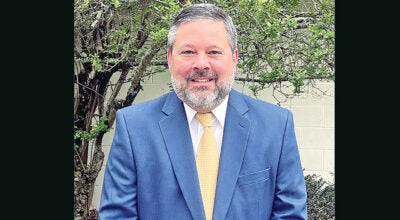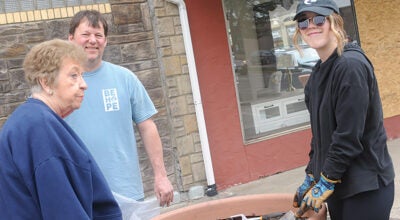Building Blocks
Published 12:28 am Sunday, March 27, 2016
CAO improves county through CDBG funds
One of the oldest U.S. Department of Housing and Development programs, the Community Development Block Grant program, paves the way to a significant number of projects throughout Lawrence County through the Ironton-Lawrence County Community Action Organization.
“The state of Ohio gets a certain amount of CDBG dollars and they award those throughout the state,” Ralph Kline, assistant executive director of the CAO, said.
Local jurisdictions are broken down into entitlement and non-entitlement communities where the money is allocated. Entitlement communities include central cities of Metropolitan Statistical Areas (MSAs), metropolitan cities with populations of at least 50,000 and qualified urban counties with a population of 200,000 or more, not including the populations of entitlement cities. The states distribute CDBG funds to non-entitlement localities, such as Lawrence County, that aren’t qualified as entitlement communities.
The state of Ohio gets $41 million in CDBG money to be distributed.
“In the past, in the 80s and early 90s, the state gave most of the allocations out through an allocation program,” Kline said. “Then, they let the counties and cities decide what it is used for, although the feds put rules on what they can be used for.”
Kline added that Lawrence County typically receives between $180,000-$190,000 a year for all projects and activities, and sometimes the county has to match the amount in order to stay competitive.
“The state expects you to want it enough that you’re willing to also spend your own resources on it,” Kline said.
Boosts
Boosts of up to an additional $300,000 can also be applied for if they apply to certain areas. These qualify more as an investment.
The three areas that a project can qualify for a boost include critical infrastructure, a neighborhood stabilization program and downtown revitalization.
“Critical infrastructure is if something is in need of repair and it creates a risk to the community, like the floodwall,” Kline said.
Critical infrastructure also includes things that are mandated under federal orders.
“Neighborhood stabilization is targeting a neighborhood and comprehensively using those dollars to try to bring it up,” Kline said. “This is like what we’ve done with Ninth Street here in Ironton over the past 30 years.”
Kline said downtown revitalization relies on business and downtown improvements and each year it is extremely competitive to receive a boost in this area.
Federal CDBG Rules
In order to obtain CDBG money, the reason for the grant must fall under three rules.
The first is that if the project benefits those with low to moderate income.
Kline said that no less than 70 percent of the CDBG funds must be used for those that benefit those of low to moderate income.
The second is the elimination of slums and blight.
“This includes the demolition of vacant and dilapidated houses and buildings,” Kline said.
The third is that it must address community development needs having a particular urgency because of imminent threat with no other funding available, although Kline said this is used seldom for CDBG money.
Proposing a project for CDBG money
Kline said that each year the CAO puts out notices to organizations, villages and governments throughout the county that explains what to do if they have a potential project that they want to get done.
“When they have a potential project, they go to the county commissioners to present it,” Kline said. “Then we meet with the commissioners to discuss them, going over which ones we think are lacking, which ones we think we can compete in getting CDBG money and the commissioners decide which projects we go after. The commissioners are the ultimate decision makers.”
The notice is put out at the beginning of the year, allowing time for projects to be proposed, before the CAO meets with the commissioners.
“We have to make sure everything is in place and there’s no environmental or historical concerns,” Kline said. “After the final projects have been decided, the CDBG needs to be applied for by June.”
Typically between two and four CDBG projects are completed a year in Lawrence County, Kline said.
Purpose of CAO
Community Action Organizations are nonprofit and aren’t present everywhere. They function mostly in more rural areas that do not have huge populations. The county government contracts with the CAO to obtain funds.
“The counties typically don’t get enough money to support people to do everything that involves that,” Kline said. “The county staff is limited to what they can administer. It’s a lot to do with the work that goes into applying for the funds.”
Because the CAO functions as a nonprofit, the county through the contract pays those who work there.





